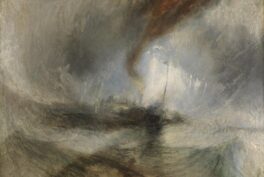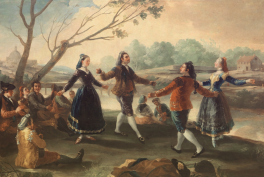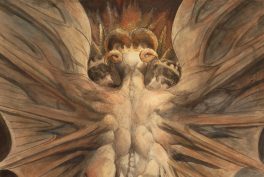Summary
- Brief historical context of Romanticism
- First romantic artists and writers
- Nature in romantic paintings
- Orientalism
- Nationalism
- Legacy of Romanticism
Turning away from the Enlightenment and Neoclassicism
1789 was a pivotal year in European history: the French people orchestrated a revolution to depose the ancient regime, taking into account ideas of the Enlightenment. At the time, reason, order, and critical thinking seemed to be the ideal way of conducting oneself. Ironically, the violence perpetrated by the revolutionaries alarmed many supporters- clearly, reason did not prevail during those massacres. At the same time, artists began to reject the established Neoclassical canon imposed by art academies. The longing for the Classical world did not fit in this new era, for artists wanted to explore their own styles and themes. They emphasized emotions, individuality, irrationality, and imagination.
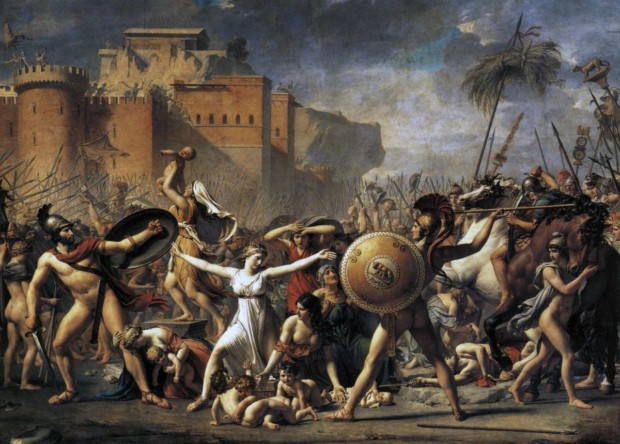
Jacques-Louis David, The Intervention of the Sabine Women, 1799, Louvre, Paris, France.
Romanticism in All Art Forms
Romanticism started in literature in Germany. The most representative work is Goethe’s The Sorrows of Young Werther from 1774. This story is of an artist faced with unrequited love who ends up dying of suicide, and it captivated audiences to the point that there were copycat suicides. While the novel suffered harsh criticism, the idea of the artist as a long-suffering genius and the over-expression of emotions became incredibly popular. In the visual arts, we can begin by looking at the work of William Blake (1757–1827). For him, science was not enough to see the truth because it was “soulless.”
This poet and artist expressed his ideas in Newton, where the scientist sits focused on a scroll and a compass, completely unaware of the world around him. Blake is often considered the father of Romanticism.
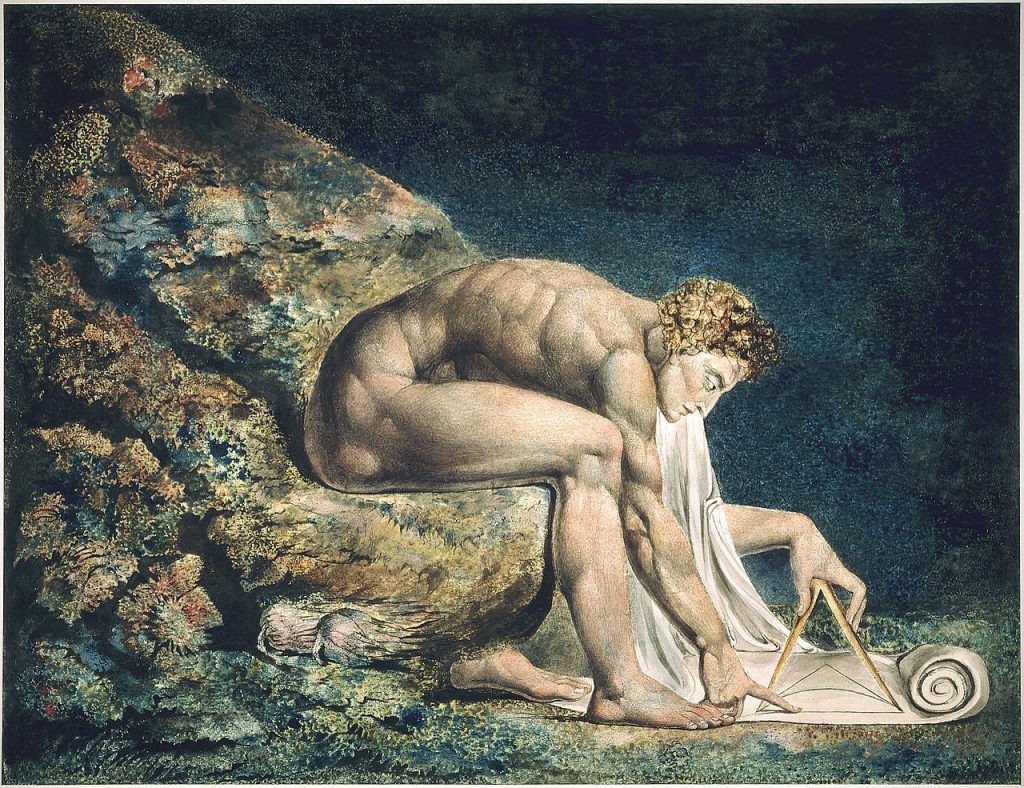
William Blake, Newton, 1795-1805, Tate, London, UK.
The ideas of individuality and artistic freedom led to a variety of styles in Romanticism. For this reason, it is hard to point out specific formal qualities. However, we can distinguish particular themes that attracted these painters.
It Happened in a Dream
Generally speaking, Henry Fuseli’s (1741-1825) painting, The Nightmare, is considered the first romantic painting. Its subject matter, dreams, went against the rational thinking of the Enlightenment. Naturally, the erotic and dark subject was the source of harsh criticism.
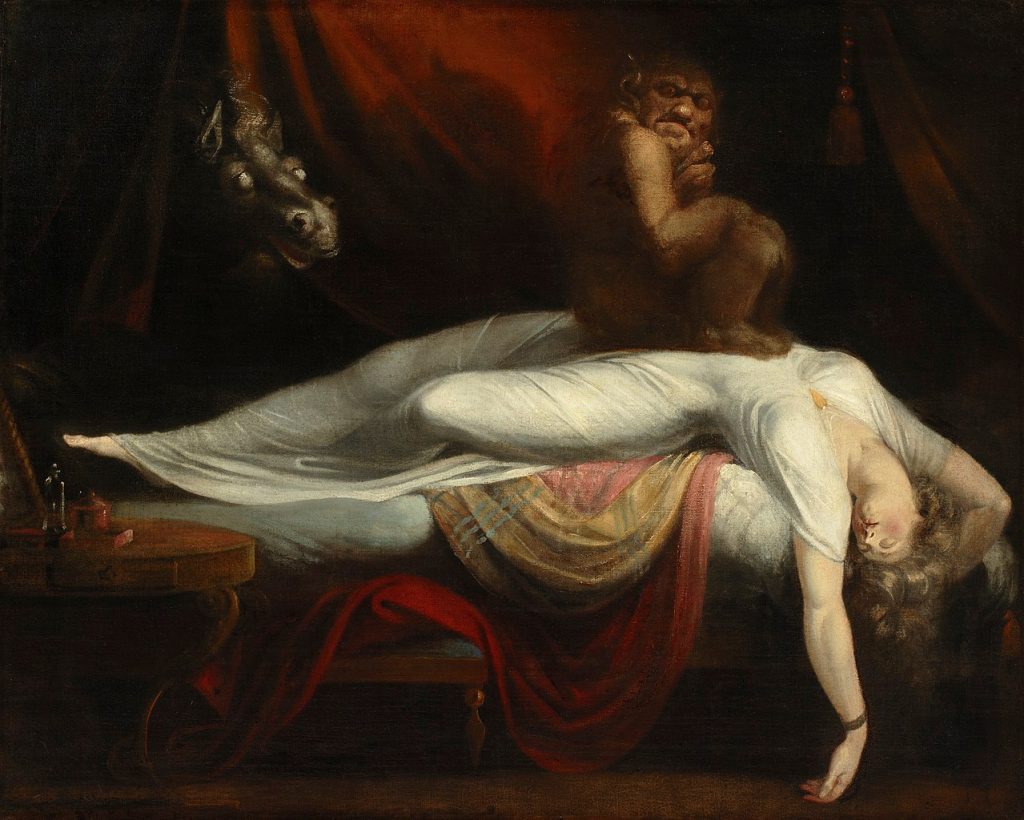
Henry Fuseli, The Nightmare, 1781, Detroit Institute of Arts, Detroit, MI, USA.
In Spain, Francisco de Goya (1746-1828) created a series of engravings about dreams. In 1799, he made The Sleep of Reason Produces Monsters. This is also a representation of the tortured artistic genius to which Romanticism referred.
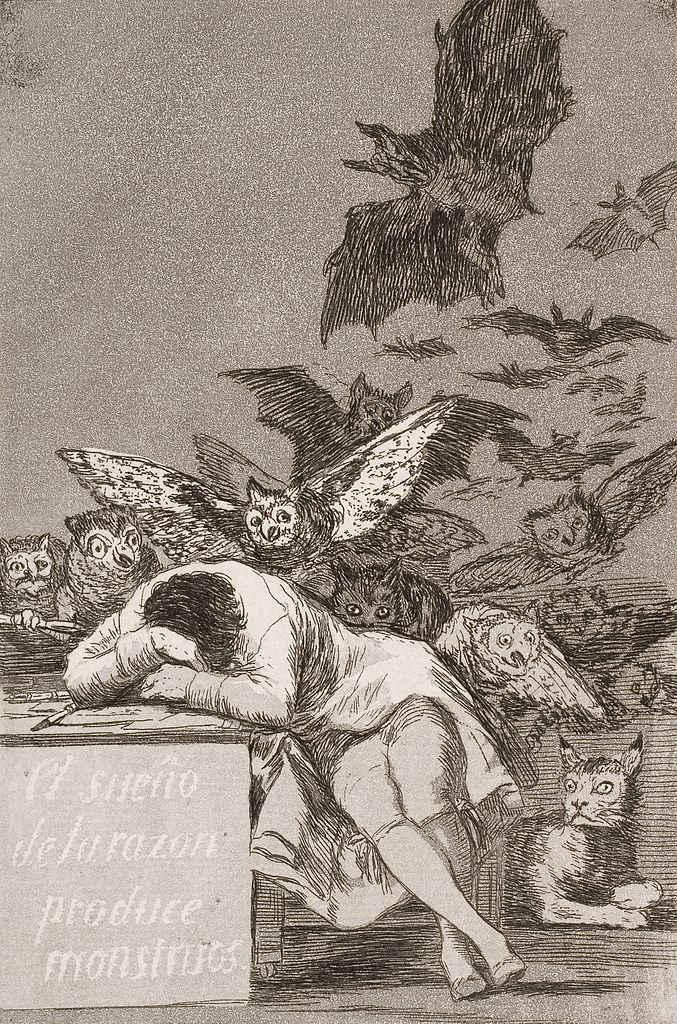
Francisco de Goya, The Sleep of Reason Produces Monsters (No. 43), from Los Caprichos, 1799, The Nelson-Atkins Museum of Art, Kansas City, MO, USA.
Nature
For centuries, landscapes remained merely a part of the picture; it was the background of a historic battle or the setting of a myth. But Romanticism took it to the next level. This is in part a rebellion against the rules dictated by art academies, as they considered it a lesser genre, not worthy of much praise.
Sublime Nature
Romanticism brought the idea of the sublime. Philosophers such as Edmund Burke and Immanuel Kant wrote extensively about it. The sublime refers to something that is greater than oneself, something uncontrollable that makes one’s existence insignificant. It is something one can only witness in awe and terror. That is nature. Perhaps the prime example of this is J. M. W. Turner’s work. Take this painting below. We can barely see the ship as a violent storm surrounds it. It was a wildly different idea from the previous belief that man could control nature. Moreover, Turner is walking towards total abstraction in this part of his career.
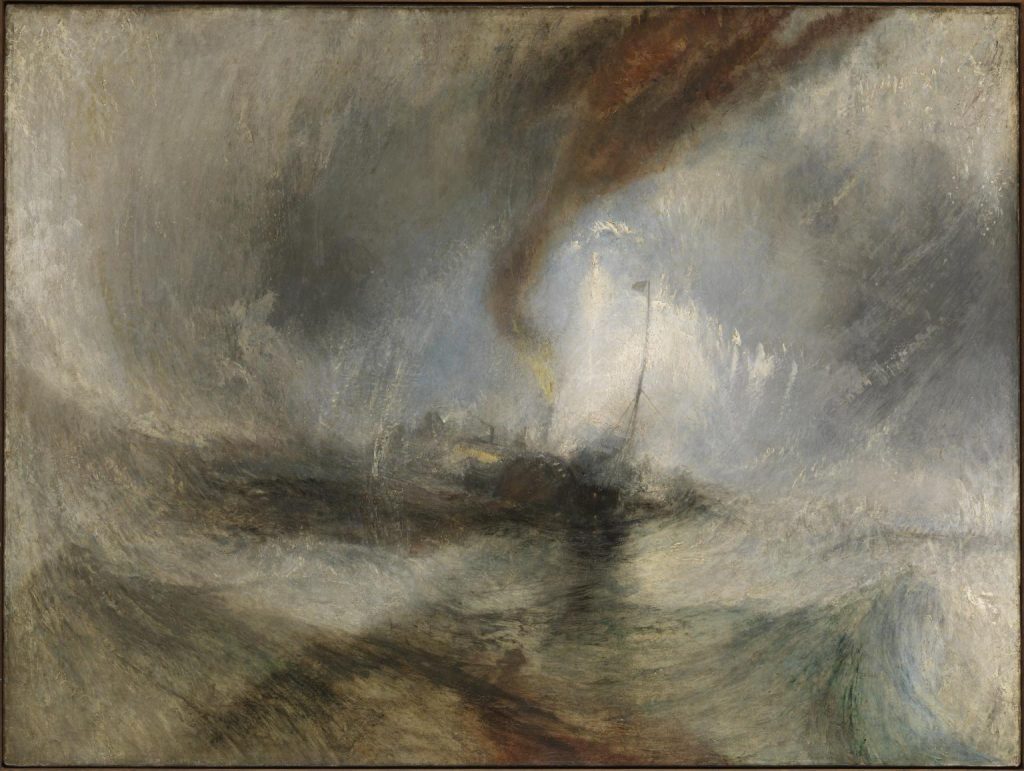
J. M. W. Turner, Snow Storm – Steam-Boat off a Harbour’s Mouth, ca. 1842, Tate, London, UK.
Caspar David Friedrich (1774-1840) also portrayed the sublimity of nature, although not in such a violent manner. Wanderer Above the Sea of Fog shows a man contemplating the landscape in from of him. Despite his position, he is not demonstrating any kind of superiority or dominance over nature, but a sense of awe at it.

Caspar David Friedrich, The Wanderer Above the Sea of Fog, 1818, Hamburger Kunsthalle, Hamburg, Germany.
Wild Nature
Another aspect of nature that interested artists during Romanticism were animals; the savager, the better. Horses, tigers, and leopards were among the favorite subjects for their explosion of unrestrained instincts and lack of rationality.
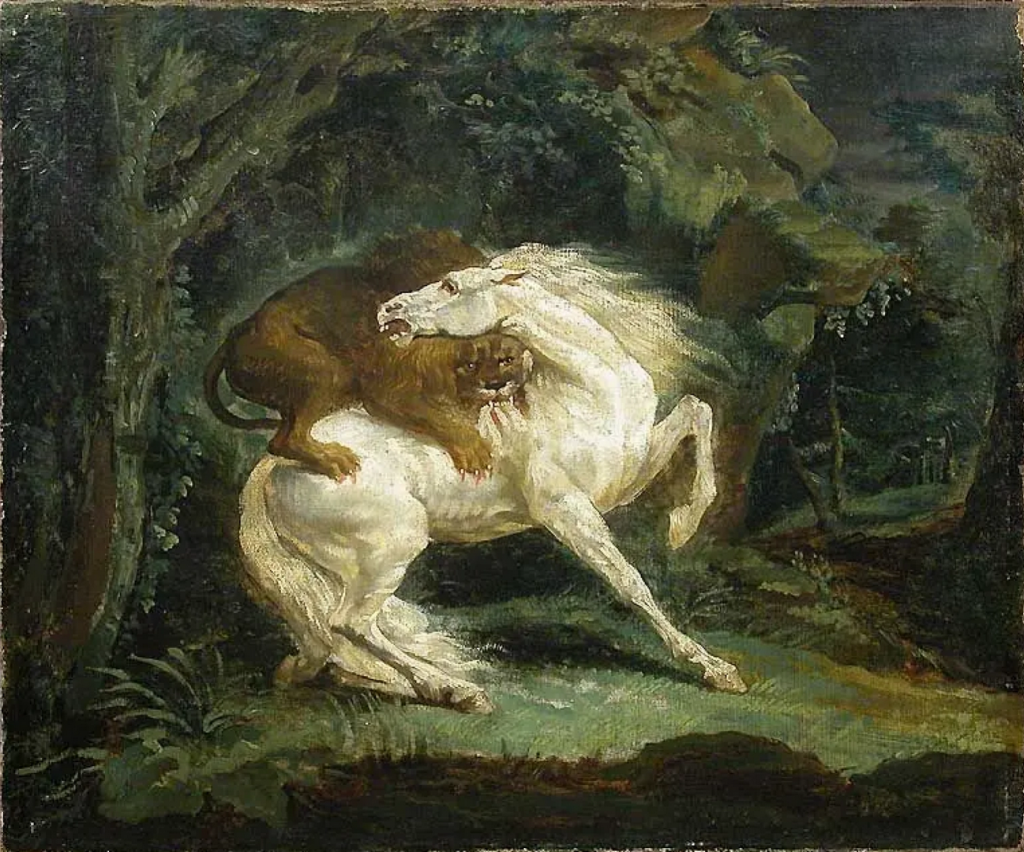
Théodore Géricault, Lion Attacks Horse, 1820, Louvre, Paris, France.
Peaceful Nature
John Constable (1776-1837) dedicated his career to showcasing the other side of nature: the peaceful and quiet one. He practiced painting en plein air (out of doors) in his beloved British countryside. Looking at the painting below, this nature is not idealized. Nor does it feature classical figures like Claude Lorrain’s or Nicholas Poussin’s works did. Constable’s pieces include normal people in their daily activities. Unfortunately, his paintings were not recognized by the critics. He was not allowed to join the Royal Academy until 1829, when he was 52 years old. Nevertheless, the French showed great appreciation for his work, allowing him to exhibit at the Paris Salon.
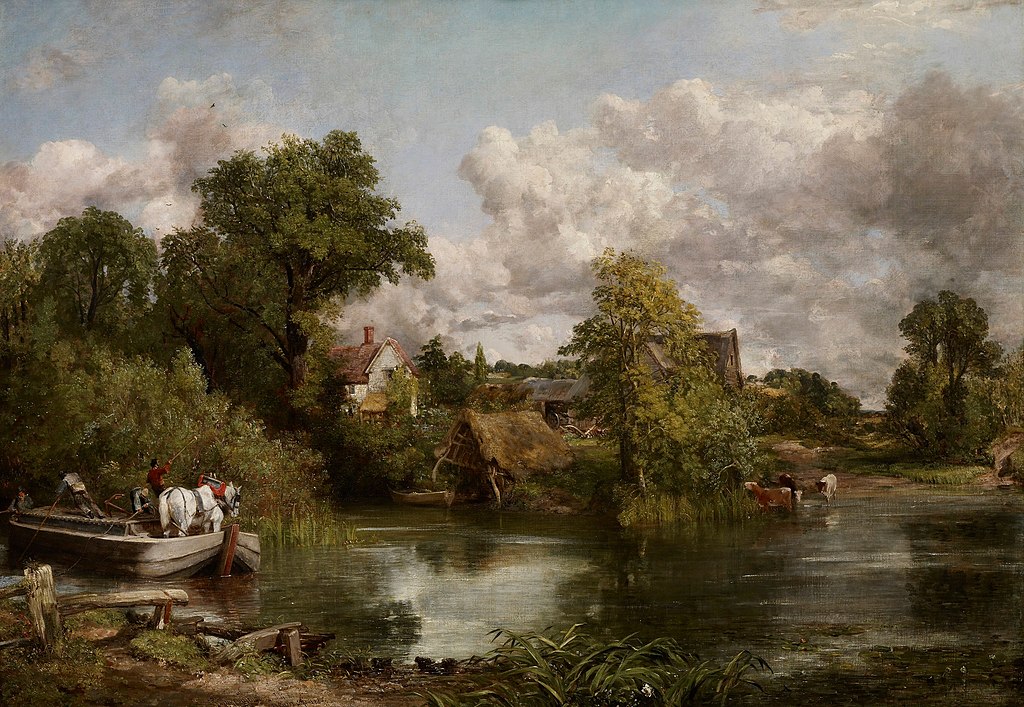
John Constable, The White Horse, 1819, The Frick Collection, New York, NY, USA.
Spiritual Nature
Caspar David Friedrich was a devoted protestant, who added a spiritual and religious element to his Romantic landscapes. Just look at his Cross in the Mountains, from 1808. Originally, this piece was shown at the Tetschen Chapel in today’s Czech Republic. This is not a typical altarpiece, for the landscape occupies the majority of the space, while the cross is seen from far away. It might seem unusual, but God is still there, in nature. Not surprisingly, it suffered negative criticism for breaking tradition.
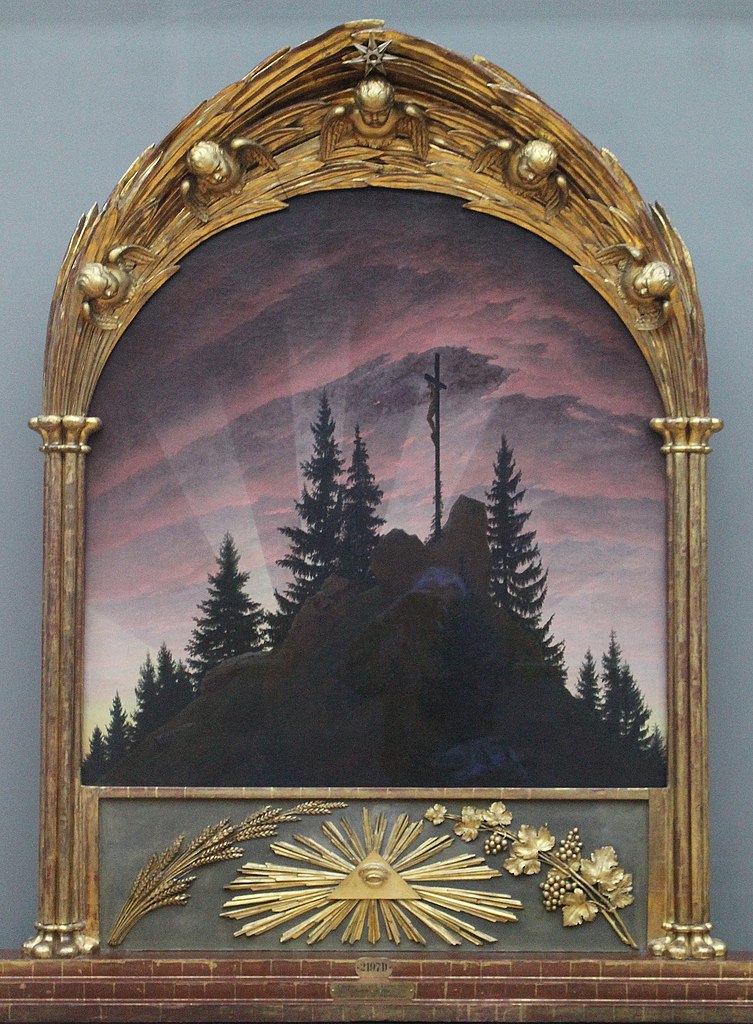
Caspar David Friedrich, Cross in the Mountains or The Treschen Altar, 1808, Galerie Neue Meister, Dresden, Germany.
Nostalgia
Nostalgia was present in many of the works of the Romantic period. Artists and architects were especially interested in the Middle Ages. In fact, the name of the movement comes from medieval romances. Due to this renewed fascination, architecture saw a revival of the Gothic style in buildings like the Palace of Westminster in London.
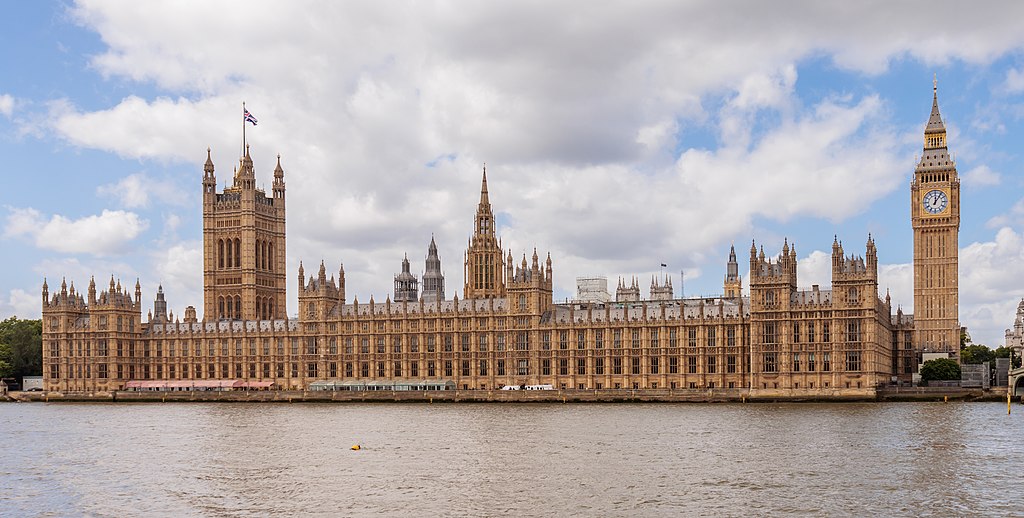
Palace of Westminster, 1840-1876, London, UK. Photograph by Terry Ott via Wikimedia Commons (CC BY-SA 4.0).
At the time, Europe was in the middle of the Industrial Revolution and everything was changing. From this, Turner painted his famous The Fighting Temeraire Tugged to Her Last Berth to Be Broken Up, 1838.
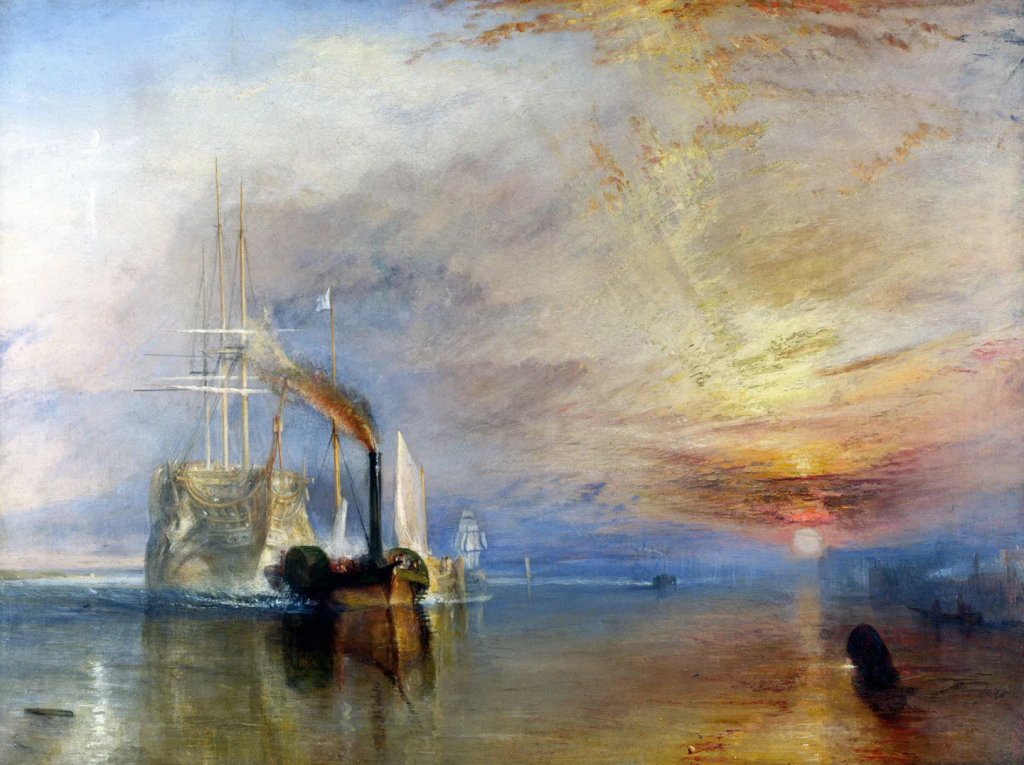
J.M.W. Turner, The Fighting Temeraire Tugged to Her Last Berth to Be Broken Up, 1838, 1839, National Gallery, London, UK.
Orientalism
Another way in which Romantics showed their longing for the past was through Orientalist works. As Europeans colonized the rest of the world, artists and writers let their imaginations loose and created unrealistic depictions of African and Middle Eastern ways of life. For example, Eugène Delacroix’s work The Death of Sardanapalus was inspired by Lord Byron’s play Sardanapalus.
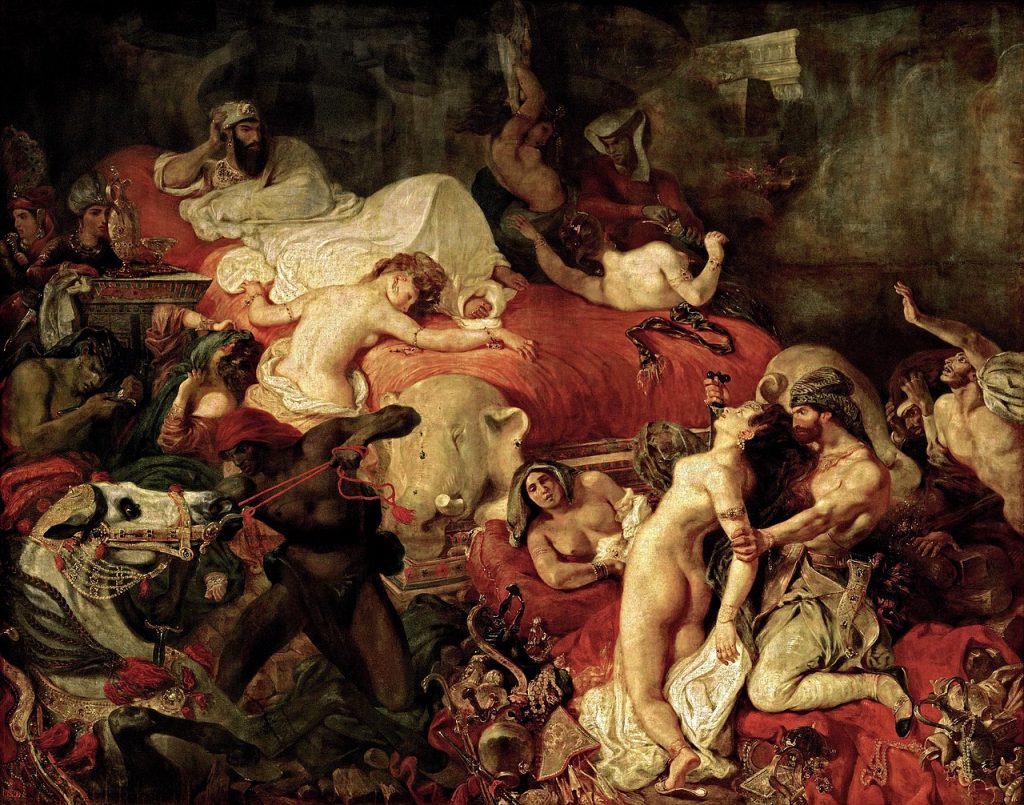
Eugène Delacroix, The Death of Sardanapalus, 1827, Louvre, Paris, France.
It is important to know that these pieces helped justify the colonization of those regions. They needed to show these people as if they were stuck in the past; they also had to represent their societies in ruins, both figuratively and literally. A lot of these works feature buildings in decay. Even in the painting above, we can see some ruins in the background. Now look at this next one. It looks alright, but the wall has cracks and some painting has fallen off, making it look old and unkept.
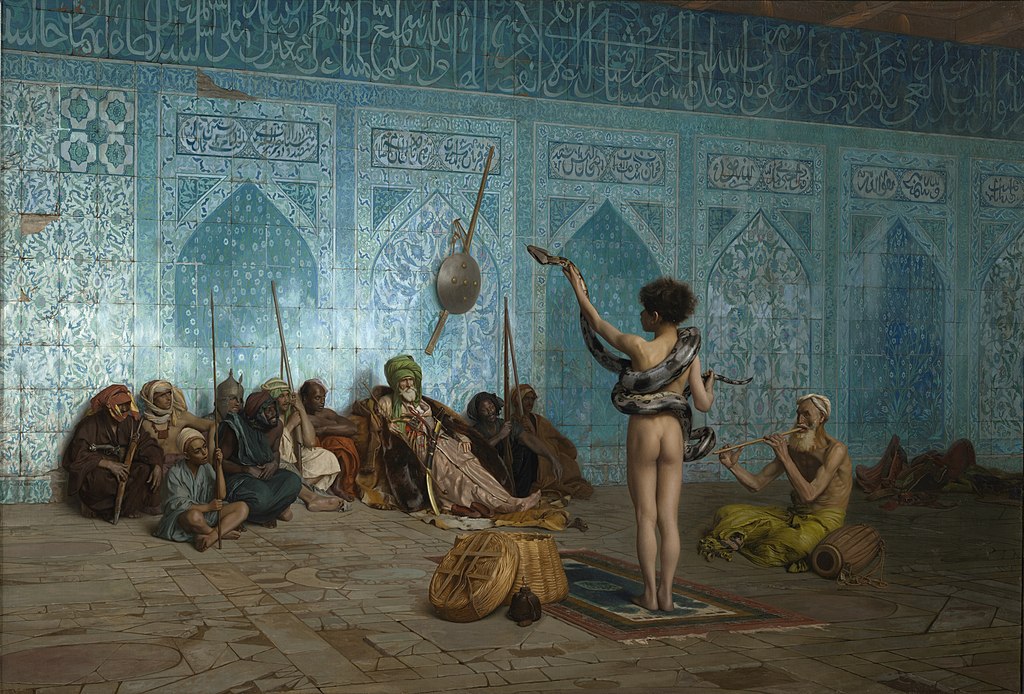
Jean-Léon Gérôme, The Snake Charmer, 1880, Sterling and Francine Clark Art Institute, Williamstown, MA, USA.
Nationalism
But Romanticism not only looked outward. The 19th century was a time of nationalism and Romantic art was perfect for it. To highlight their country’s history, artists looked back at historic moments. For example, Goya made his The Third of May 1808 to commemorate the Spanish resistance to Napoleon’s invasion. This painting has been discussed for a long time now, and notes were made about the central figure that recall the Crucifixion. It was precisely the type of symbolism that would inspire patriotism.
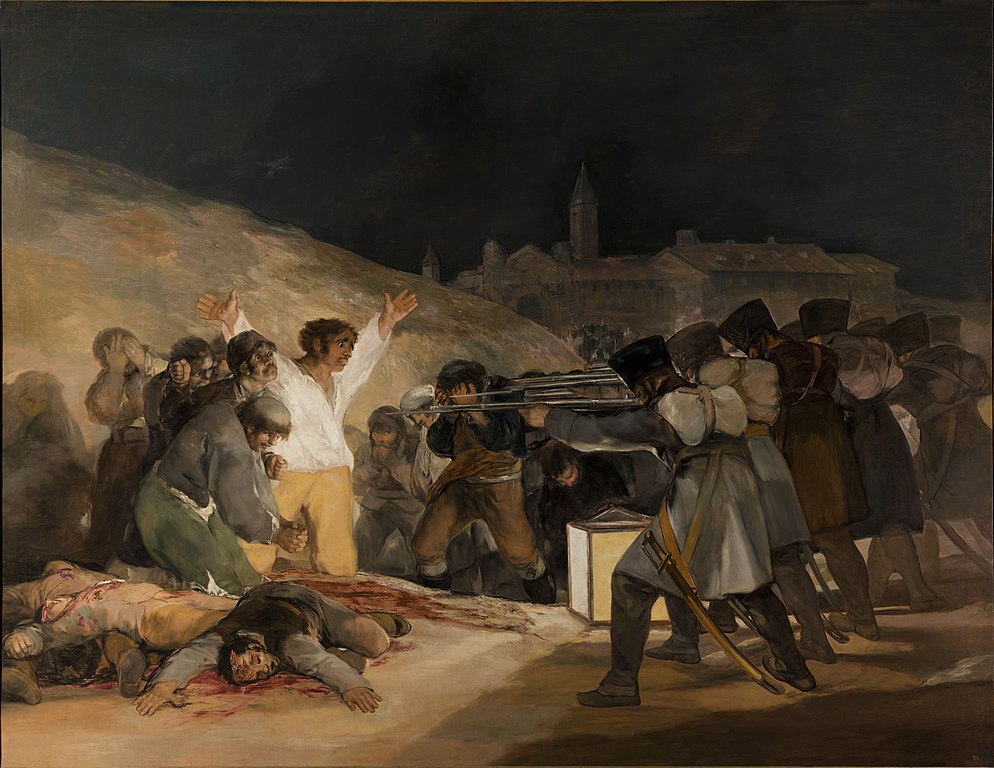
Francisco Goya, The Third of May 1808, 1814, Museo del Prado, Madrid, Spain.
Romantic American artists from the Hudson River School used landscapes to show off the natural beauty of their nation. They produced striking compositions with a nostalgic and picturesque feeling. Just look at Albert Bierstadt’s painting. The way the light illuminates the scene seems almost religious. Nature is represented as calm and majestic.
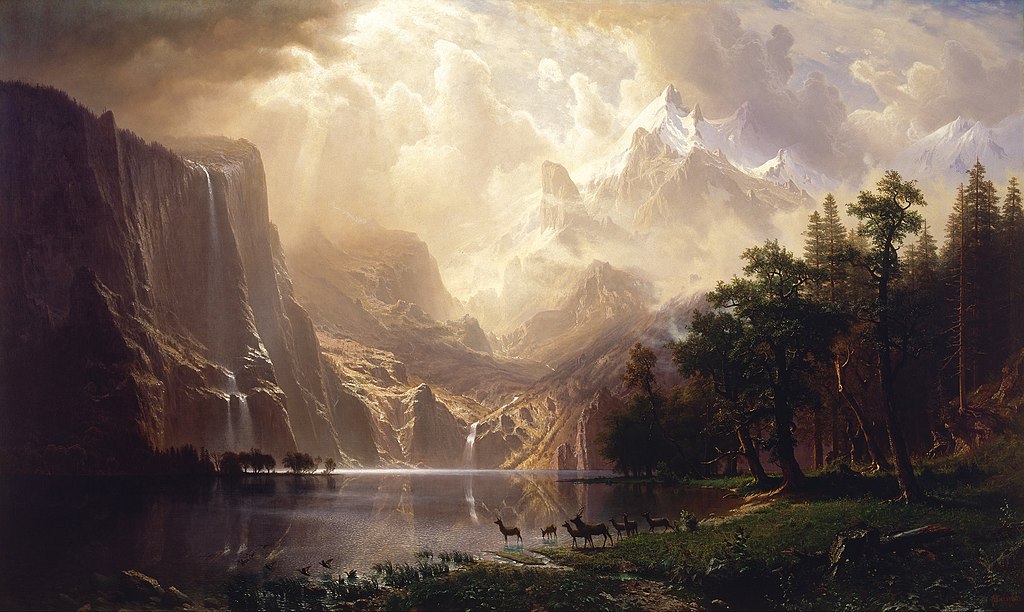
Albert Bierstadt, Among the Sierra Nevada, California, 1868, Smithsonian American Art Museum, Washington, DC, USA.
Romantic Portraiture
The search for individuality did not remain solely in the artist’s painting style. Portraiture became a medium to express the sitter’s psychological state. An example of this is the series of portraits by Théodore Géricault (1791-1824) about residents of asylums.
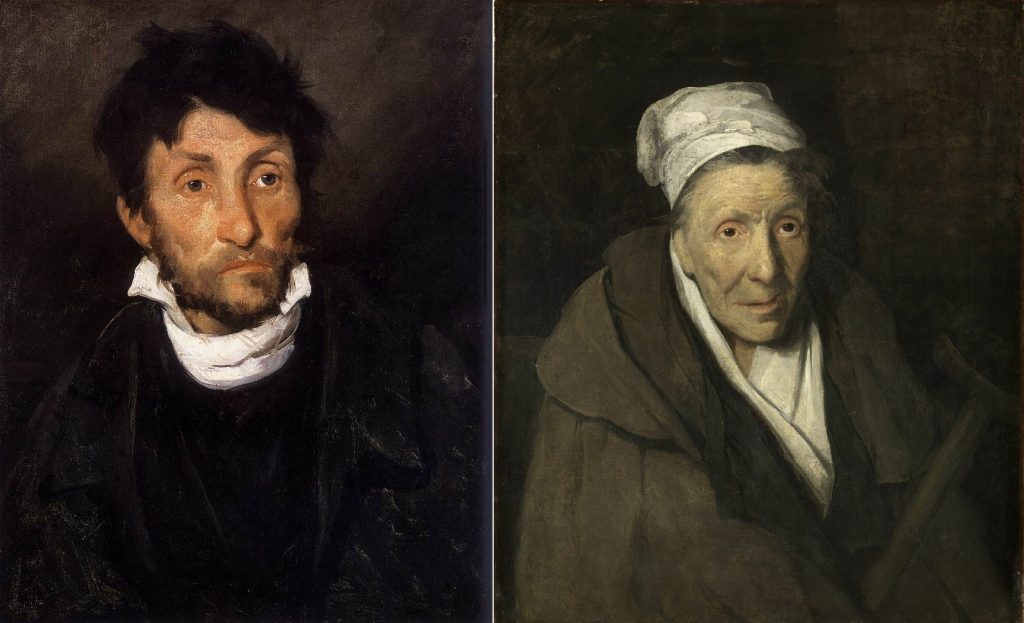
Left: Théodore Géricault, Portrait of a Kleptomaniac, c. 1820, Museum of Fine Arts, Ghent, Belgium. Right: Théodore Géricault, A Woman Addicted to Gambling, 1822, Louvre, Paris, France.
Romantic History
Social Justice
French artists took history painting in new directions. Aside from the usual mythological and biblical themes, they wanted to portray recent events, especially those that exposed acts of injustice. In 1819, Géricault shocked the Paris Salon with his The Raft of the Medusa. A group of survivors hang on to life after the wreck of their ship, due to the captain’s negligence, and the captain and the high officers abandoned 147 members of lesser rank in a raft. Géricault chose to depict the moment when they see a boat that may save them. At that point, there were only a handful of people still alive. Most of them died of starvation, some others were thrown overboard to relieve weight. They even had to commit cannibalism to survive. The tragedy was a scandal in France, therefore, people recognized the subject in Géricault’s painting.
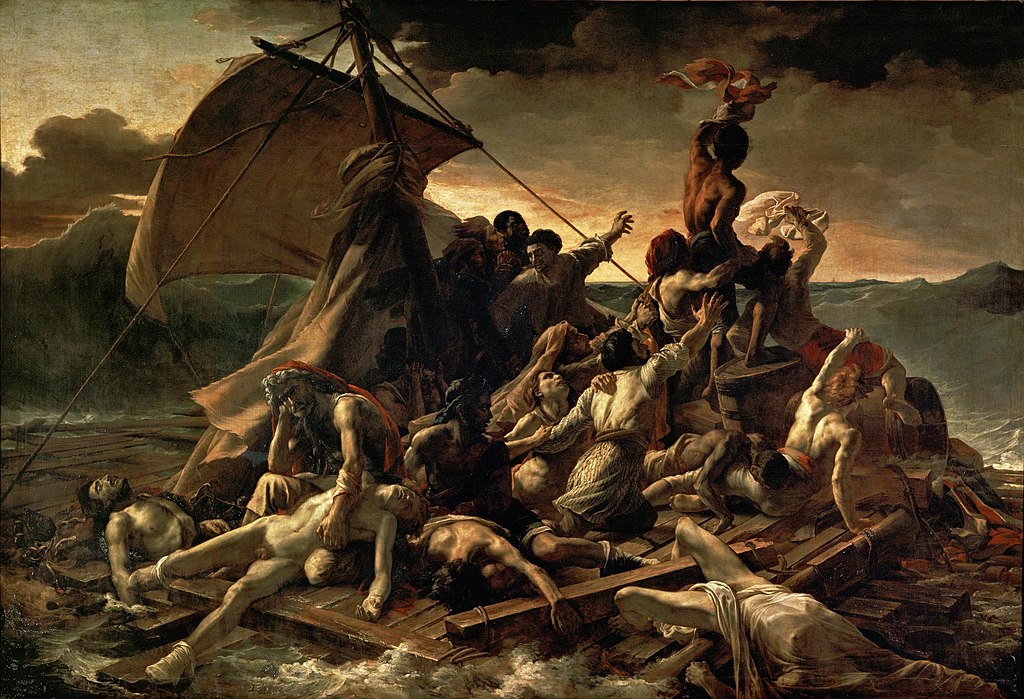
Théodore Géricault, The Raft of the Medusa, 1818-1819, Louvre, Paris, France.
Revolution
Another French artist who used his canvases for social and political reasons was Delacroix. Of course, we shall talk about his famous Liberty Leading the People from 1830. Here, we see a female figure as an allegory for liberty, calling back to traditional historical painting. The painting recalled the recent uprising against King Charles X.
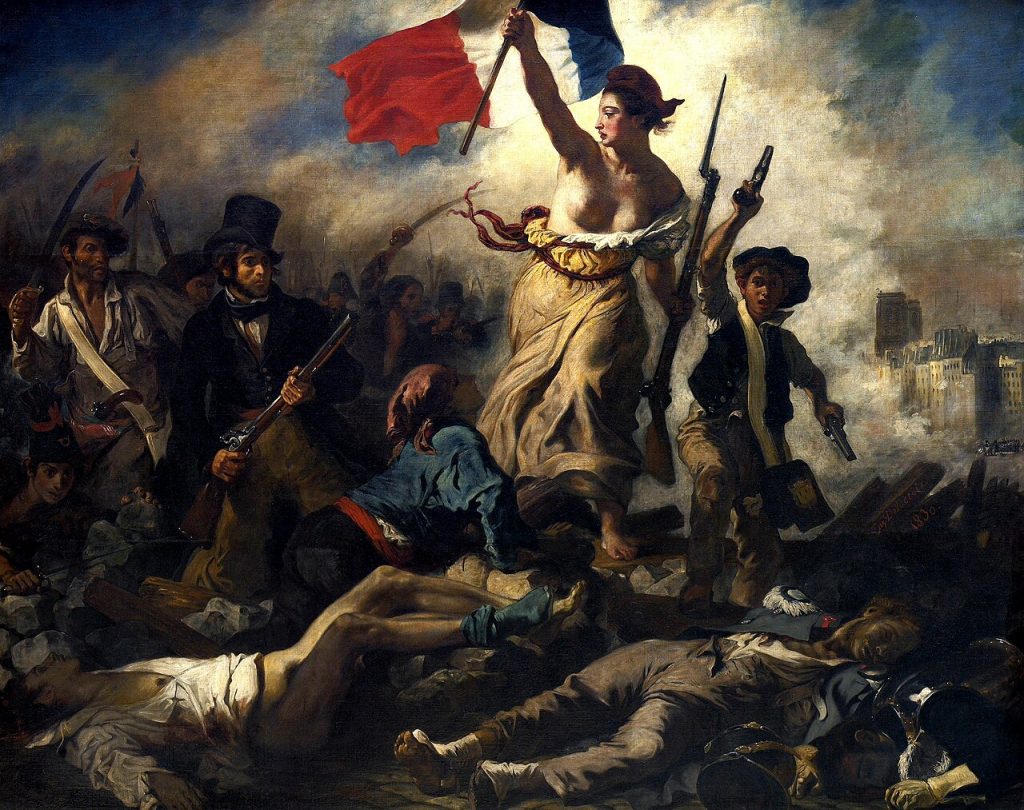
Eugène Delacroix, Liberty Leading the People, 1830, Louvre, Paris, France.
Other paintings by Delacroix illustrated the Greek War of Independence from the Ottoman Empire. On the left, The Massacre of Chios evidenced the Ottoman oppression. On the right, an allegory of Greece stands in the ruins of Missolonghi after an Ottoman siege.
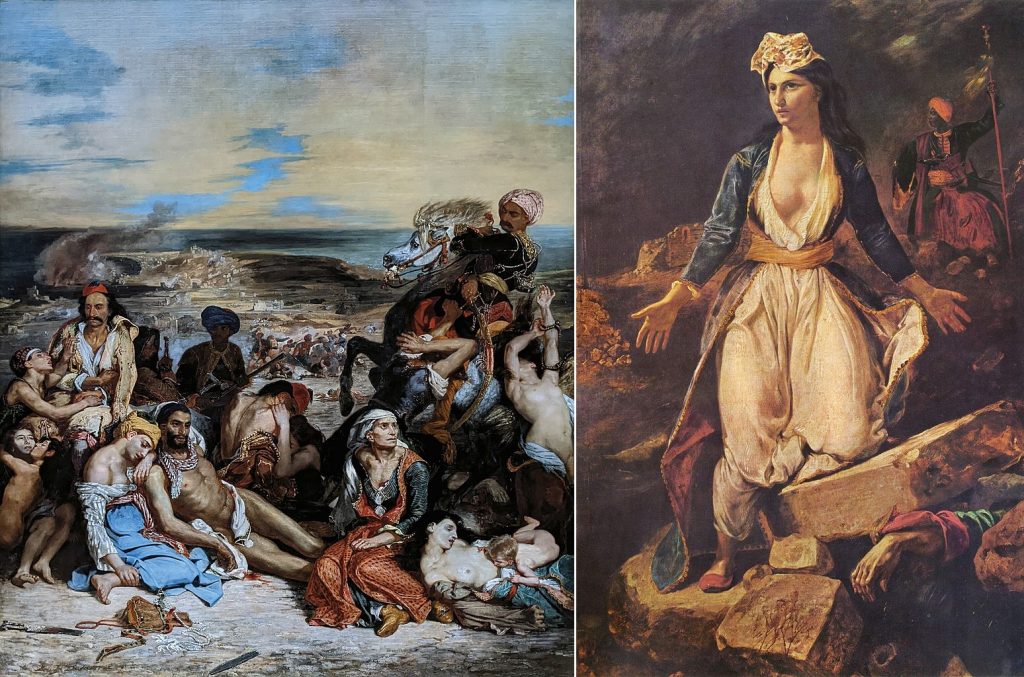
Left: Eugène Delacroix, The Massacre at Chios, 1824, Louvre, Paris, France. Right: Eugène Delacroix, Greece on the Ruins of Missolonghi, 1826, Musée des Beaux-Arts de Bordeaux, Bordeaux, France.
Legacy of Romanticism
The ideas of artistic freedom did not mean a complete rejection of the art institutions. The examples in this article show that artists preserved ideas of proportion, perspective, academic drawing, and anatomy. Moreover, many of them still searched for institutional approval. Turner taught at the Royal Academy at the beginning of his career, while Constable fought to be a member for years. Delacroix and Géricault exhibited their paintings at the Salon. However, Romanticism ended up inspiring a later generation that broke up with the Academy, the Impressionists. Turner’s treatment of light is just one example of this. Another could be his interest in a modern invention- the train.
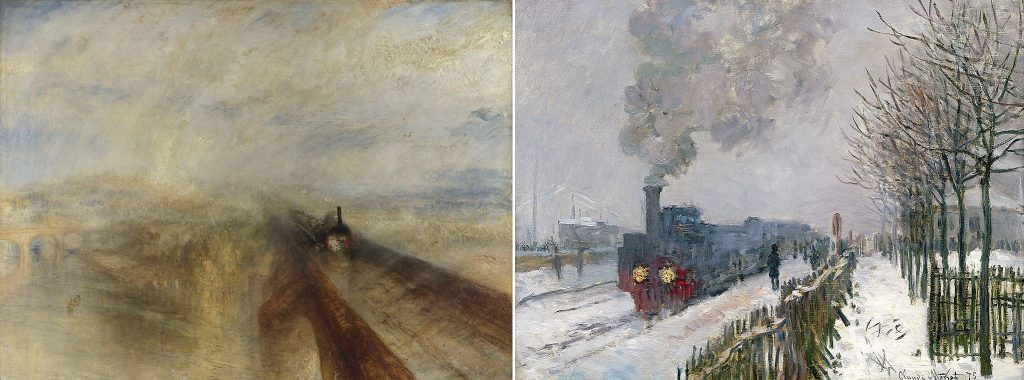
Left: J. M. W. Turner, Rain, Steam and Speed – The Great Western Railway, 1844, National Gallery, London, UK. Right: Claude Monet, The Train in the Snow, 1875, Musée Marmottan, Paris, France.

